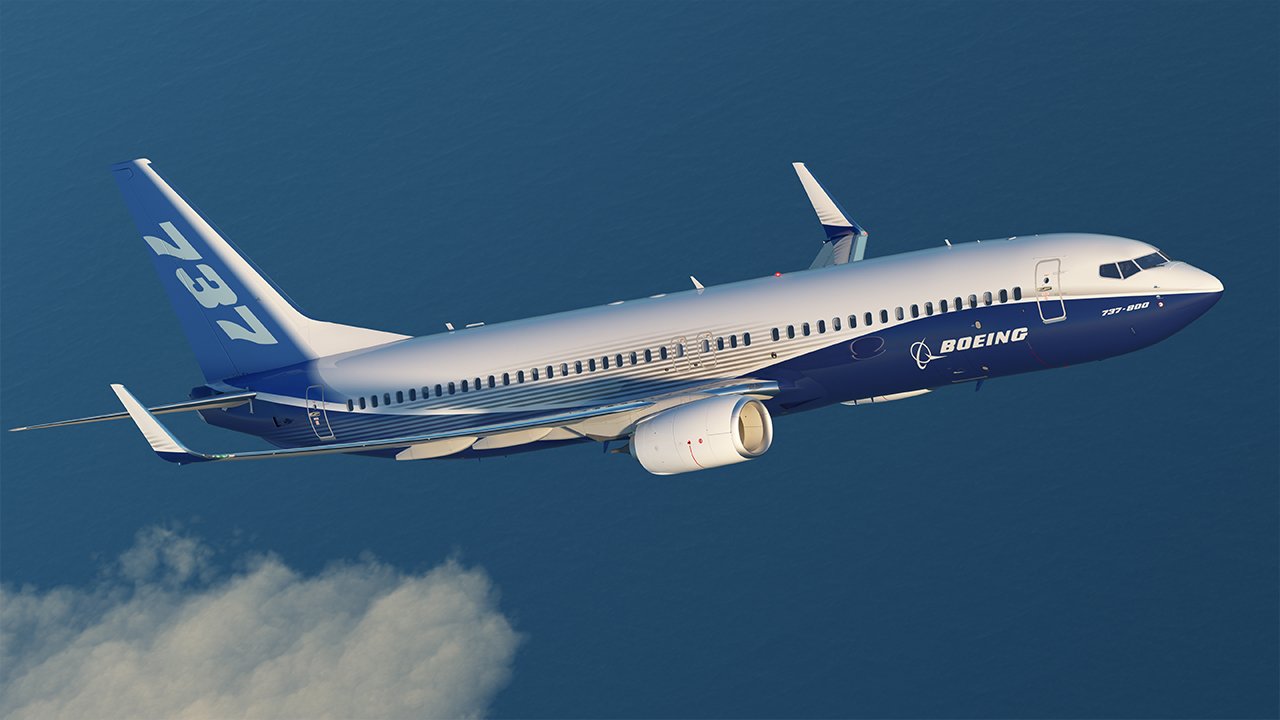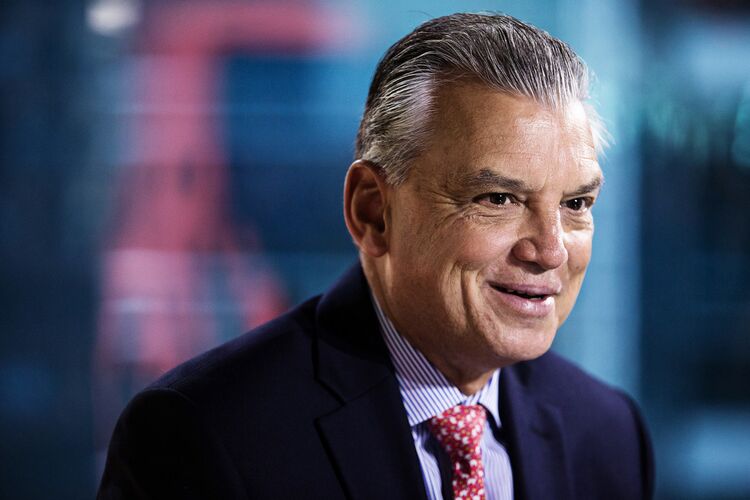Leeham News and Analysis
There's more to real news than a news release.
Pontifications: Boeing view of market conditions today
Sept. 14, 2015, © Leeham Co.: Randy Tinseth, Boeing’s VP Marketing, spoke with Bernstein Research last week on a variety of topics. In a note issued after the conversation, analyst Douglas Harned reported:
- “Boeing views the 140 orders to date as a good start, and that high demand for this model will come later when it is closer to being in service. Boeing is sold out for all models of the 787 through the decade, so there are few opportunities for near/medium term deliveries in any case. The company sees the 787-10 as a natural replacement for 767s, A330s and some 777s, and expects that these will drive strong replacement

Randy Tinseth. Photo: Boeing.
demand in the early 2020s.”
- “Airlines have been upgauging narrowbodies away from the 737-700 and A319. Boeing expects that the 737-900ER will gain share, but that the 737-800 (or soon the 737MAX-8) will remain its most popular narrowbody. Airlines have been moving to larger narrowbodies and using slimline seats to add capacity to existing airplanes. Boeing believes that, while this trend does exist, the market will be centered on the 737-800/A320-size airplanes, but with a larger share than in the past going to 737-900s/A321s. Boeing believes that its product set offers greater flexibility since the 737-800 and 737-900ER are closer together in size that are the A320 and A321.”
- “In terms of orders for the 777, the companyis sold out in 2016 and is over 60% sold out for 2017, with many campaigns in progress. Production of the 777X would start in 2018 and current 777 rates will be lowered to introduce the 777X in the final assembly line (consistent with our projections). There are some 737NG slots left in 2018 and 2019, but the first available slots for the 737MAX are now in 2021.”
Bjorn’s Corner: Production costs.
11 September 2015, © Leeham Co: In connection with our articles, there a numerous reader discussions around the development and production costs of new aircraft families. It’s not easy to understand how these costs arise, how they are booked in the OEM’s accounting and how they can be compared. Time for a primer.
I will not duplicate a course in company accounting, but it can be worth the read to understand how costs are created, accounted for and what we as externals can observe via aircraft industry economic reports .
I will focus on Airbus and Boeing. These are good examples of the different ways of collecting and showing costs in the global aircraft industry.
Boeing’s 767 revitalized as a MOM stop gap, Part 3
By Bjorn Fehrm
Subscription required.
Introduction
Aug. 31 2015, ©. Leeham Co: After examining the characteristics of the Boeing 767 to serve the market segment that Boeing is studying for its Middle of the Market (MOM) requirement, the 225 passenger/5000nm sector, we will now finish the series by looking at how the 767 can be made economically more competitive.
We will study the influence of improved aerodynamics like Aviation Partners Boeing’s Split Scimitar Winglet for the 767. We will also look at what engine PIPs can provide and also look at what a re-engine could bring.
Finally we examine at what happens when we add crew costs, underway/landing fees and maintenance costs to form Cash Operating Costs (COC) followed by capital costs to form Direct Operating Costs (DOC).
Summary:
- Boeing’s 767 has the right cross section for passenger transportation in the 225 passenger/5000nm segment.
- Its wings and empennage are too large, however. We make them work harder by transporting the 767-300ER fuselage and passengers.
- We also introduce aerodynamic and engine improvements. Still, the fuel consumption per seat mile is considerably higher than modern alternatives.
- At a Cash Operating Cost and Direct Operating Cost level, the higher fuel consumption has less influence in today’s fuel prices. The result is that the 767-300ER becomes an interesting alternative as long as the fuel price stays low.
A320 oversold in bridge from ceo to neo
Subscription Required
Introduction

Airbus A320neo. Source: Airbus
Sept. 7, 2015, © Leeham Co. Airbus is oversold in its A320 family positions as it transitions from the ceo to the neo, an analysis shows.
The first delivery of the A320neo is scheduled for December. Airbus plans to phase out the A320ceo family over two years (as does Boeing with the 737NG in favor of the 737MAX).
We analyzed the 737NG bridge to the 737MAX last week and concluded Boeing faces a production gap of between 100-200 aircraft, depending on how delivery dates of 737MAXes for Unidentified customers are scheduled. We indirectly received push back from Boeing on this, which we also address in today’s report.
Summary
- Airbus is oversold in 2016 and 2017.
- A gap appears in 2018, but this depends in part how “TBA” delivery dates are allocated for Unidentified customers.
- Boeing says Options and Overbooked orders fill its apparent 737 gap.
- We update our 737 production gap analysis to include Options and find a gap still exists.
- Boeing wants to accelerate MAX deliveries from 2018 into 2017.
Boeing faces 737 production gap: analysis
Subscription Required.
Introduction
Sept. 2, 2015, (c) Leeham Co. Boeing faces a production gap for the 737, based on an analysis of the delivery streams of the 737NG and the 737 MAX.

There’s a production gap for the Boeing 737 more than 100 airplanes, according to a Leeham Co. analysis. Boeing photo.
While focus of Boeing production gaps has been on the 777 Classic and, to a lesser extent, the 747-8, few have analyzed the production gap for the 737 line. Boeing announced rate increased from 42/mo to 47/mo in 2017, the year the MAX enters service, and again to 52/mo the following year. The company is studying taking rates even higher, to 60/mo, by 2020. Boeing cites a large backlog and continued demand for the 737 for boosting production rates.
But Market Intelligence indicates emerging concerns about the gap.
Summary
- We see a gap of perhaps 100-200 737s in 2017 and 2018, even as the 737 MAX is “feathered” into production of the 737NG.
- Beyond 2018, the apparent gap depends largely on the delivery stream of Unidentified MAX customers accounting for nearly 600 orders identified by the Ascend data base. Boeing lists just over 1,000 Unidentified 737 orders through July (August figures aren’t out yet), sharply higher than the Ascend data base.
- The current low fuel price environment is a concern.
Pontifications: Casting eyes toward Dubai Air Show
Aug. 31, 2015, © Leeham Co. September begins tomorrow and we’re only nine weeks away to the 2015 Dubai Air Show.
We’re looking to this event to be the last big opportunity for major airplane orders for this year. While it’s true that Airbus, Boeing and the other ![]() OEMs make a big year-end push to top off the order book, the Dubai show has become increasingly on a par with the Farnborough and Paris air shows, but focused on wide-body orders and program launches.
OEMs make a big year-end push to top off the order book, the Dubai show has become increasingly on a par with the Farnborough and Paris air shows, but focused on wide-body orders and program launches.
Eyes on the Dubai Air Show will be watching for what could be would be this year’s prize catch: whether Emirates Airlines will be ready to place the oft-talked about order for 50-70 Airbus A350-900s or Boeing 787-10s. (Some have floated an even higher number.) The other big item of interest: whether Airbus will launch the A380neo.





